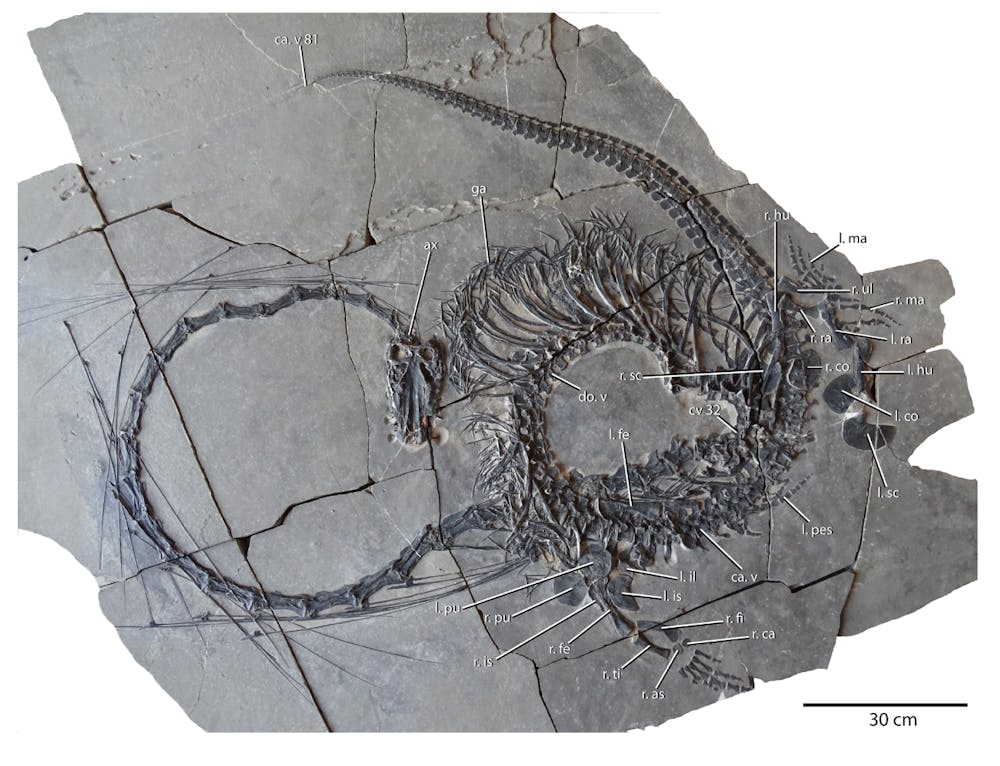By Aneri Upadhyay
Staff Writer
The Year of the Dragon has begun, and last week, scientists found a 240 million year old “dragon” fossil.
According to NPR, the fossil of the Dinocephalosaurus orientalis is from the Triassic period and was found in southern China, specifically in the Guizhou Province. This is not the first discovery of this animal but it is the first full skeleton found, with the fossil ranging 16 feet long.
Nick Fraser, head of the National Museum of Scotland's Department of Natural Sciences, spoke about the discovery in a news release.
"It is yet one more example of the weird and wonderful world of the Triassic that continues to baffle palaeontologists," said Fraser. “We are certain that it will capture imaginations across the globe due to its striking appearance, reminiscent of the long and snake-like, mythical Chinese Dragon."
The paper describing this discovery was published in the journal Earth and Environmental Science: Transactions of the Royal Society of Edinburgh on Feb. 23.
This find is a collaboration between researchers from Scotland, Germany, the United States and China, according to Professor Li Chun from the Institute of Vertebrate Palaeontology and Palaeoanthropology, according to NPR.
This reptile used to live in the ocean, according to reports from the Institute of Vertebrate Palaeontology and Palaeoanthropology, as seen by the fish found in its stomach and flippers.
The animal also has a long neck with 32 separate vertebrae, which is longer than the body and tail combined. For comparison, a giraffe has only seven neck vertebrae, according to Live Science. Cambridge University press believes that this was instrumental in feeding, according to NPR.
This long neck is also why it is dubbed a “dragon,” as reported by BBC. According to Live Science, the neck is almost 7.7 feet long.
Live Science stated that the neck could have helped this reptile sneak up on prey, getting into the right position to do so using its flippers. The “dragon” had serrated teeth, making the fish snared in its stomach.
BBC also reported that the fossil was discovered in limestone deposits.
First author Stephan Spiekman, a postdoctoral researcher based at the Stuttgart State Museum of Natural History, released a statement on this finding.
"We hope that our future research will help us understand more about the evolution of this group of animals, and particularly how the elongate neck functioned,” he said.







